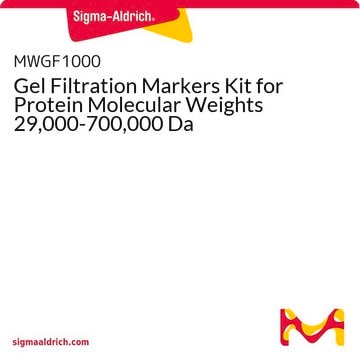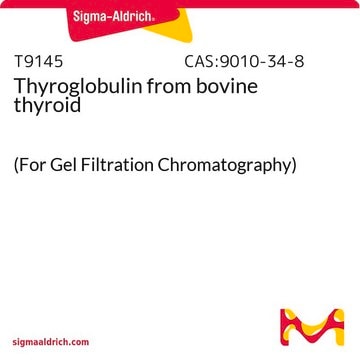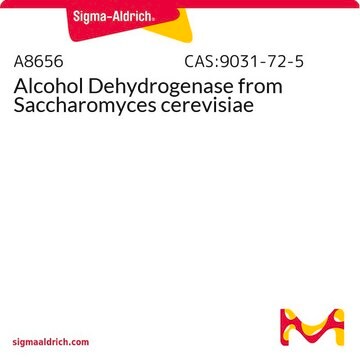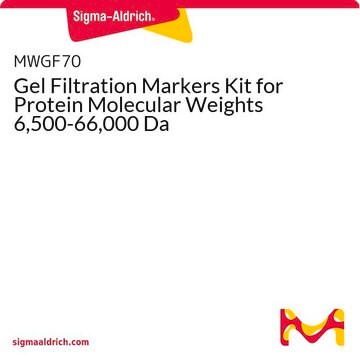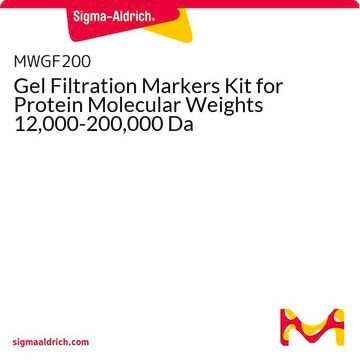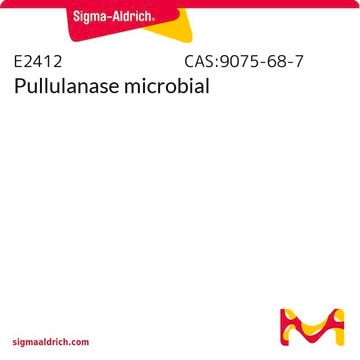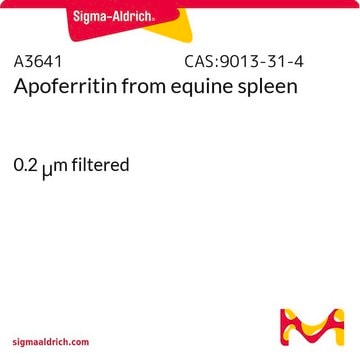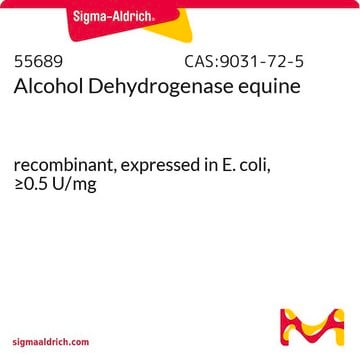A8781
β-Amylase from sweet potato
Synonym(s):
1,4-α-D-Glucan maltohydrolase
About This Item
Recommended Products
form
powder
mol wt
~200,000
packaging
vial of 15 mg
greener alternative product score
old score: 57
new score: 1
Find out more about DOZN™ Scoring
greener alternative product characteristics
Waste Prevention
Safer Solvents and Auxiliaries
Design for Energy Efficiency
Learn more about the Principles of Green Chemistry.
sustainability
Greener Alternative Product
greener alternative category
storage temp.
−20°C
Looking for similar products? Visit Product Comparison Guide
General description
Application
- as a molecular weight marker in blue native polyacrylamide gel electrophoresis (PAGE)
- as a standard for calibration curve preparation in size exclusion chromatography
- as a model protein for small-angle X-ray analysis (SAXs)
Biochem/physiol Actions
Signal Word
Danger
Hazard Statements
Precautionary Statements
Hazard Classifications
Resp. Sens. 1
Storage Class Code
11 - Combustible Solids
WGK
WGK 3
Flash Point(F)
Not applicable
Flash Point(C)
Not applicable
Personal Protective Equipment
Certificates of Analysis (COA)
Search for Certificates of Analysis (COA) by entering the products Lot/Batch Number. Lot and Batch Numbers can be found on a product’s label following the words ‘Lot’ or ‘Batch’.
Already Own This Product?
Find documentation for the products that you have recently purchased in the Document Library.
Customers Also Viewed
Protocols
Gel filtration chromatography is an established method for determining the size and molecular mass of proteins.
Our team of scientists has experience in all areas of research including Life Science, Material Science, Chemical Synthesis, Chromatography, Analytical and many others.
Contact Technical Service
